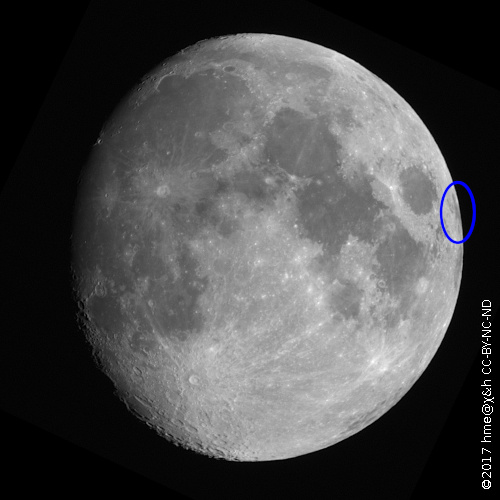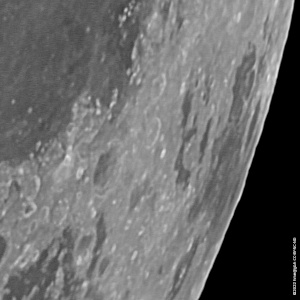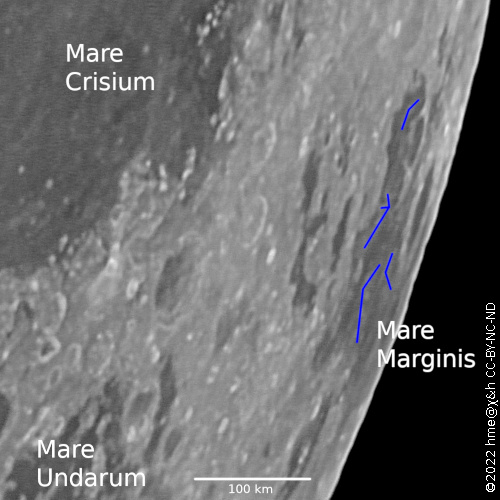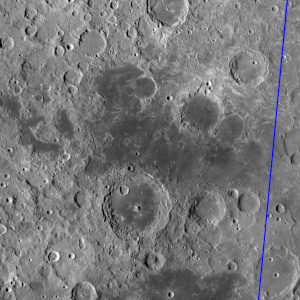
{
Practical astronomy
|
Astronomy
|
The Moon
|
The physical Moon
|
The Lunar 100
}
Lunar #100: Mare Marginis swirls
Mare Marginis, as the name suggests, lies on the margin of our Earthlings' view of the Moon. Look on the eastern limb beyond Mare Crisium. The view depends crucially on a favourable libration in longitude. Naturally, this side of the lunar limb is illuminated only during the first half of the lunation.
The object in question is not the Mare as such, but the brighter, swirly deposits on the darker mare floor. Such swirls appear to be related to a stronger than average lunar magnetic field. These swirls are an albedo effect and create no shadows. As such the lunar phase is less important than the libration in longitude; Wood recommends two days after New Moon, which is a crescent phase of only 4%.
Due to the foreshortened perspective and the irregular shape of Mare Marginis, it is difficult to distinguish between bright swirls on the dark mare floor on one hand and the transition from dark mare floor to brighter highland areas. A view vertically down on the Mare is recommended when comparing your observation with the Atlas virtuel de la Lune.
Refer to Wood's list (2004a and 2012a) and to his notes (cf. Hardwick 2013a). Compare your observation with the Atlas virtuel de la Lune (Chevalley and Legrand 2012a). In this atlas, at high resolution, in general, consider a photographic texture like the LRO WAC mosaic as well as the synthesised topography of the LOLA Kaguya Shade texture. For regions near the lunar limb, changing from the foreshortened Earthlings' perspective to the vertical view down on the Moon can be instructive.
Images:
- The Moon on 2017-05-07 stacked from four raw frames taken with a Telementor II refractor of f = 840 mm, f/13.3. Unsharp mask. Libration in longitude was +5.2°; the phase was 92%. The location of Mare Marginis is marked in blue.
- Mare Marginis on 2022-11-04, stacked from 700 video frames taken with a Schmidt-Cassegrain reflector of D = 200 mm and f = 3500 mm and Canon EOS 600Dα camera. Wavelet sharpening. Libration in longitude was +4.6°; the phase was 86%.
- Dto. with annotation, scale, and the swirls marked in blue.
- Screenshot from Atlas virtuel de la Lune showing the view down on Mare Marginis with the LRO WAC photographic mosaic texture. This helps to confirm the distinction between swirls and mare boundaries. The blue line indicates approximately the limb as seen from Earth.




